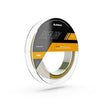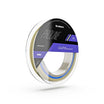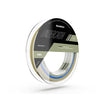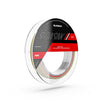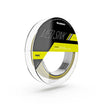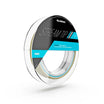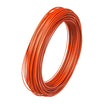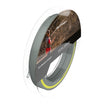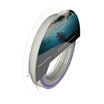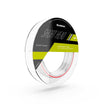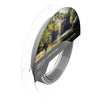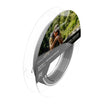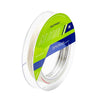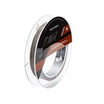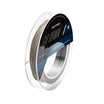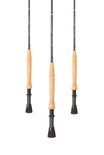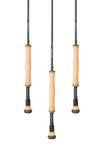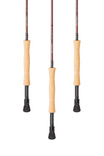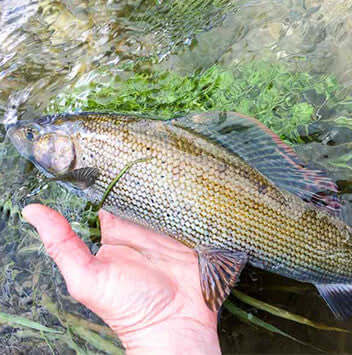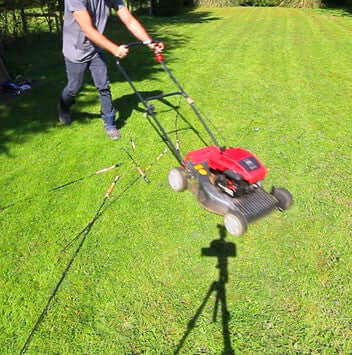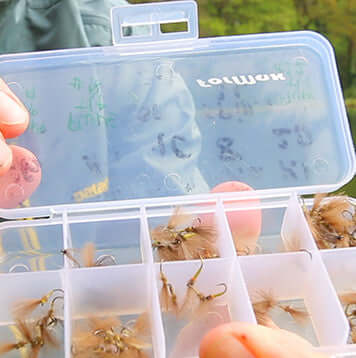It is just an idea, perhaps; a state of mind. An idea that we can reach a place in our chosen sport where it all makes such deep, perfect sense.
It is not that I’m catching lots of fish. Far from it. Actually, I can’t remember a time so lean as now. On the French chalk I am struggling to find trout. The streams are low and clear, with that healthy, aquifer coldness and clarity, while the wind has been persistently from the north east. A Hydro caddis nymph or ever-dependable PTN seem to be finding a few big grayling for me. Beautiful, post-spawn fish (they did all that a month ago here), that are hanging in the deepest runs. There are dark olives around, but seldom hatching while I am on the river, though I see a lot of spinners in the air. That wind is keeping hatches and risers at bay and I am not seeing trout hovering in the glides. They will come.

And back on Eden, that erstwhile jewel of England’s rivers, I observe an entire ecosystem in decline, being so grossly abused by agricultural activity, and yet surviving. I wonder for how long, but I have wondered this for many years now. Eden is a miracle, no question, and there are those who cherish it, though not enough.
For all of this, I find myself in a state of hope and satisfaction, almost euphoria. In life, in fly fishing, which become the same thing when you have lived over fifty years with a fly rod as a limb. Because it is all so simple.

You see, I have followed giants. I have followed and I have done my own thing, or what I have perceived as thus. Frank Sawyer and Arthur Cove in fly fishing; James Lovelock and Rachel Carson, those glimmers of light in the science, the warnings from nature: GAIA - Silent Spring. I was taught for a while, at King’s, by Maurice Wilkins. I can remember the unassuming man, in that post-DNA structure/Nobel laureate glow. It is history, and it left its mark. There are modern-day sparks of genius too. I came across one quite by chance (is anything really entirely chance?) a few years back. He said he could design me ‘my’ line - a fly line that would change everything. And he did. I still use that line, one of the early prototypes. Well, why not? I mean, Pink Floyd were one of the great rock bands of the 70’s, and still are four decades later. The Cove PTN was the perfect nymph of stillwaters and the Sawyer PTN the same for rivers, of their eras. And, in terms of dry fly, the plume tip and Oppo of my era. And of course, they all still are.

Now, from the same man who gave us the line, I have the rod to match. How that limb has been refined along the journey. I still remember the Grafham Ghost, given to us by another great designer, Don Neish. That was the limit, then, the ultimate of what glass fibre could yield, for a specific purpose.

Today, I found myself on l’Aa, the perfect storm of French chalk streams, no, of all the world’s chalk streams, using the Sunray Hybrid tippet, almost to complete the circle. So, dry fly, in that cool wind and bright sun, and, frankly, with nothing rising, was out of the question, so I nymphed it. Just a matter of being in the right place, choosing that water which was both accessible and which had to hold the fish in the prevalent conditions. And not trying too hard. Curiously no trout, but just as soon as that wind changes they will be up at the emergers and duns; brown trout do this, materialise as if from nowhere. It makes sense when it happens, while always being a welcome surprise. Though what fabulous grayling, les ombres des rêves, lurk in this wonderful river.

What am I trying to tell you? That there is a state to which all us fly fishers aspire? And that we cannot do this alone. That we follow, and we stand on shoulders, and, most of all, we put in the time on wild waters. Certainly that we try too hard. Sometimes. Usually. Until we are old and cease to worry about it all. You see, it’s fly fishing. Just fly fishing. At its best for wild fish; and nothing at all to worry about. You read the waters, figure out where the fish will be - unless they are not kind enough to show you by rising, in which case you have the simplest approach of all with dry fly - and you put your fly there. If along the way, you haven’t spooked your fish, they will usually take the fly.
They are forgiving, as today when I walked along the Aa to a place I love (well, I love the entire river, but, you know, there are places that stand out). To my initial dismay, a herd of half a dozen Charolais had chosen this self same spot to sun themselves and mulch through the afternoon. So, I nudged my way through them, accepting the sniffing and licking. It must have been good karma, because they didn’t scatter. French afternoon in the sun. Even with my eager friends around me, the grayling came to the nymph, just so long as I let it drift at their depth, without hurrying it along.
It was one of those odd, special moments. The Charolais on the skyline, bright sun on the water of a shrunken chalk stream and nothing hatching. But there was that deep, jade green cut in the flow. If I were a fish; that’s where I would be. So, the pheasant tail drifted there, without hindrance. The lightest of touches, but the inevitability that it was a fish. A great fish too. It ‘grew’ on the end of the line, until it became obvious that it was a very good fish, at which time I leaned out of it, the way I like to ‘put them to sleep’, which is just my euphemism for easing back on the rod so that the fish can settle. Some say it is more my affectation. Whatever, often it works. The fish settled and I was able to hold it upstream and ease it back down to me so that it turned its flank and I could steer it onto the water crowfoot. Once there, and calm, it is mine. No need for a net. No need to hurry. No need to touch it. Keep them wet, as we say nowadays, and you have time to snap a few photos before reaching down, slowly, and turning out the hook. It is magical.
Not so long ago, we were not able to do this, not with the elegance that is possible today. Because you surely cannot do it with a thick PVC fly line, nor a tippy, fast action fly rod. Frankly, we could not do it at all until the beautiful innovation of firstly the French-style leaders and, latterly, micro thin fly lines; and very soft rods. I
If one is blessed with having had that fabulous amount of time given to the river, with trout and grayling, and given those shoulders on which to stand, then any of us can venture to the limits of possibilities, in a place, a sport, which is otherwise so unnecessarily cluttered. Perfect sense? Yes, but paradoxically, it does not need to make any sense at all.



